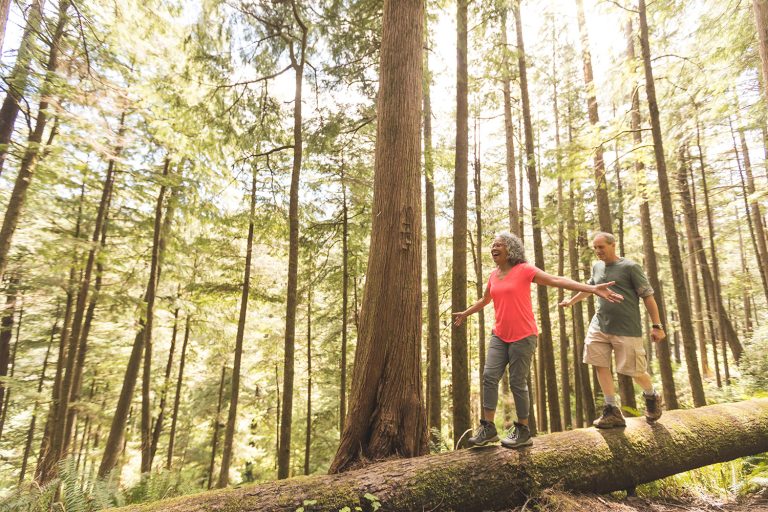
Did you know that more than 1 in 4 people over the age of 65 fall each year according to the Centers for Disease Control and Prevention (CDC)? Even more shocking, 20% of these falls result in a serious injury that can lead to hospitalization or long recovery times.
Slips and falls may sound minor, but they are a serious health issue. Fortunately, there are many ways for seniors to improve their balance in order to reduce their risk.
The Importance of Fall Prevention for Seniors
According to the CDC, falls that result in injury often lead to painful health outcomes. These can include:
- Broken bones
- Head injuries
- Emergency room visits
- Unexpected out-of-pocket costs
- Increased fear of falling, which can lead to a less active lifestyle
Broken bones and head injuries are often just the tip of the iceberg and result in other issues. For example, hip fractures often require surgical repair, which increases the risk of infection and complications like blood clots, UTIs and pneumonia. Even without complications, long recovery times lead to muscle loss and decreased independence.
Head injuries can be particularly dangerous for patients taking blood thinners, and they may lead to a traumatic brain injury (TBI) if you sustain a serious fall.
5 Ways to Improve Balance for Seniors
Clearly, maintaining and improving your balance has important benefits for your health and longevity. Add these recommendations to your wellness plan to achieve a better sense of balance:
- 1. Get a checkup. If your balance is getting worse, it is important to rule out any underlying causes. Schedule a checkup with your physician and share your concerns. Then, followup with any recommended testing to determine if there is a specific physical cause.
- 2. Visit your optometrist. If you have not seen your eye doctor within the past year, it is time to make an appointment! Blurred vision or an out-of-date bifocal prescription can make you more likely to miss a step and contribute to slips and falls.
- 3. Strengthen your legs. Studies show that strength training is an important way to improve balance in seniors. Focus on your hips, thighs and calves to build the muscles required to keep you on your feet. You can visit a gym or do squats and calf lifts at home.
- 4. Strengthen your core. Your abdominal muscles are also crucial for balance, since they stabilize your entire body. Old-fashioned sit-ups are no longer recommended. Instead, try yoga moves like planks and bridge poses. You can also get on your hands and knees to practice raising your opposite leg and arm at the same time.
- 5. Take a walk. Walking is one of the best all-around exercises, helping to strengthen your legs and build stamina at the same time. Regular activity is also important for maintaining balance, and the more you move, the more you are able to move. If you are feeling unsteady, walk with a friend or with hiking poles for support.
Maintaining balance as you age is a key to staying active and being able to do the things you love, whether it is walking the dog or hiking with the grandkids. Fellowship Connected Living is committed to helping you stay active and independent. Find out more about how FCL can help you live your best life today.



